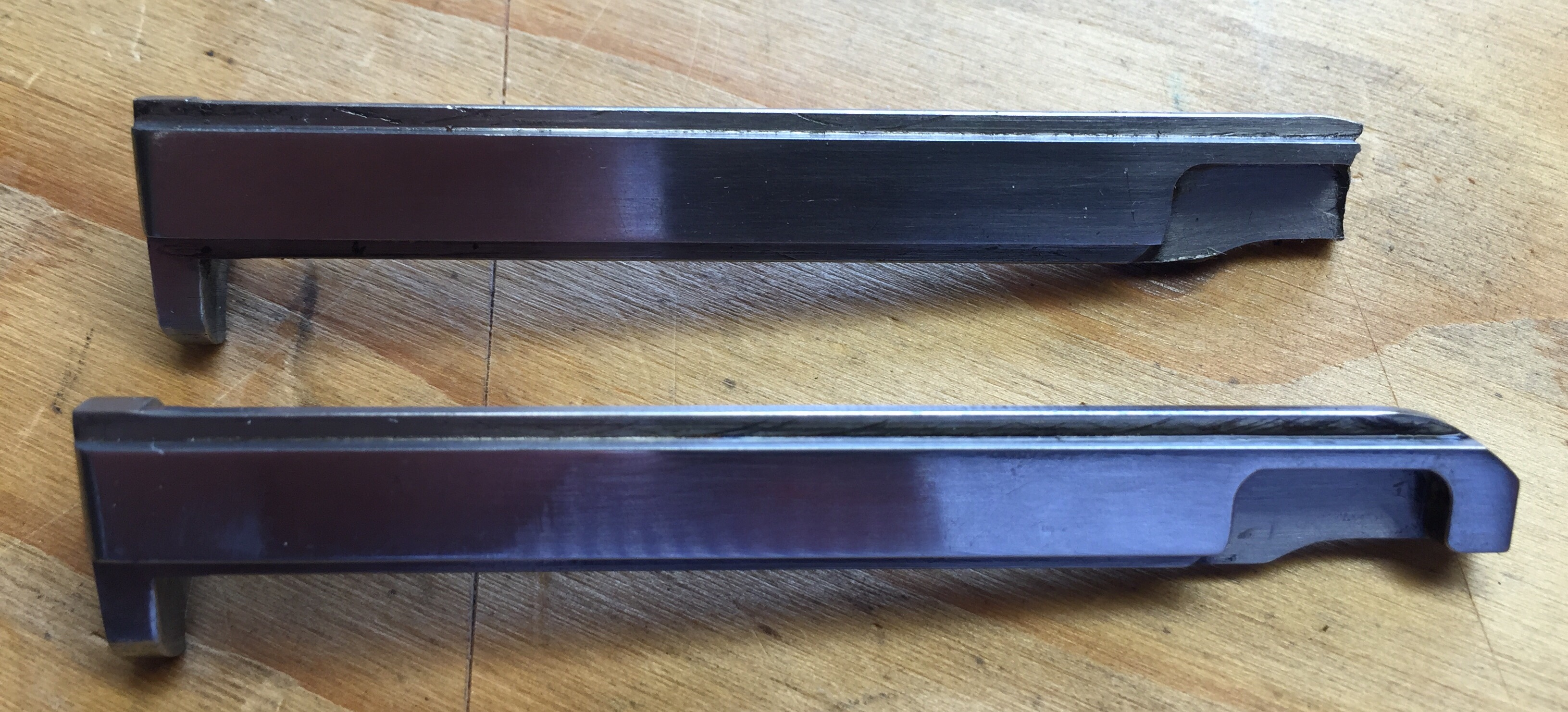-
Krieghoff K-80, ejector removal and replacement
The K-80 ejector is retained in the slide by a small ball and spring. The ball and spring are not captive, meaning they are loose and kept in place only by the ejector itself. Removal is easy. Using the plastic head of the stock wrench like a hammer, tap the back end of the ejector lightly. The ball will jump out of the cut out on the back of the ejector allowing it to be pulled all the way out of the slide. Before pulling it clear, turn the barrel over so that the ejector you are removing is facing down, ideally onto a pad of cloth. When you pull the ejector clear the ball will shoot out and be caught in the cloth. The small spring will probably stay in its hole in the mono block so will need picking out with a pin. Clean the ejector and slide. Dab a bit of grease into the spring hole and push back the spring. Sit the ball on top of the spring over the recessed hole. Start the ejector into the slide but stop before the rear end reaches the ball. Using the hex end of the stock wrench, press the ball down flush to the bottom of the slide and then push the ejector smoothly against the stock wrench and over the ball. Push the ejector all the way back and the ball will jump up into the cut out and hold the ejector in place.
All ejectors break from time to time because the repeated impact at the rear work hardens the material. Krieghoff have refined the design in recent years and the ejectors now have a remarkably long life. In tests they have passed 100,000 rounds without fail. The test rig in the factory is interesting and holds a K-80 action and barrel. The gun fires, opens, ejects and closes in a non stop cycle powered by compressed air. It does not fire live ammunition but the stress on the ejector parts is the same.
If you do suffer a breakage it will be the back part that has broken off. It is rare that the head breaks. The first task is to remove the forearm and look for the broken off end. If left in place it will foul the mechanism and most likely jam the gun. Leave the remainder of the broken ejector in place in the slide and replace the forearm. The gun will now work normally except that it will not eject. You will still have primary extraction because the ejector engagement with the action body will lift the cartridge head high enough for it to be pulled out with the fingers. So long as the barrels are on the action the broken ejector is captive and you cannot loose it. You can shoot the gun safely like this until such time as a new ejector can be fitted. Never shoot the gun without the ejector in place. If you do so the rim of the cartridge is unsupported and there is a risk that the pressure will rupture the case head with potentially dangerous consequences.
A new ejector is a blank part and will be oversize in many areas. Firstly it will need fitting to the slide and then the head is cut to fit the chamber before filing down flush with the breech face of the barrels. Lastly, the rim has to be cut to match the depth of the rim in the barrel. This is not a job that can be done without the barrel. We have, in an emergency, pre-fitted a blank using another barrel as a pattern but this is not really a good idea. A perfect fit can only be achieved by fitting the new ejector to the correct barrel.
Share this:





